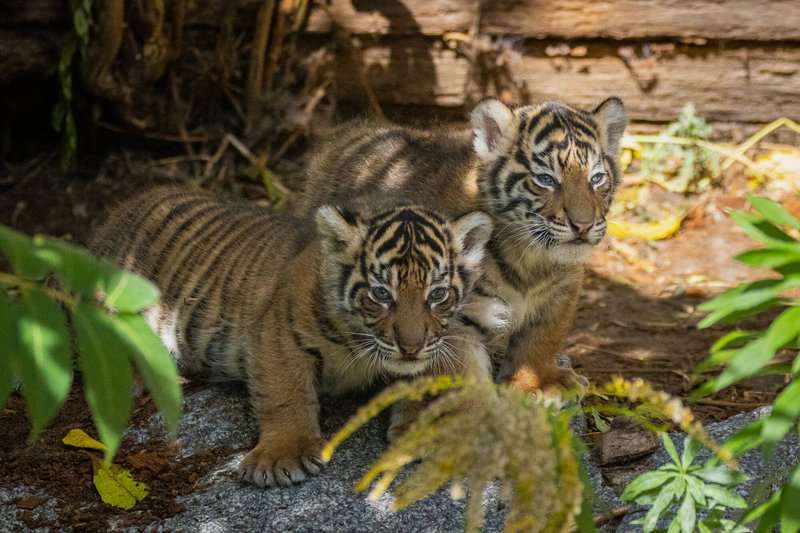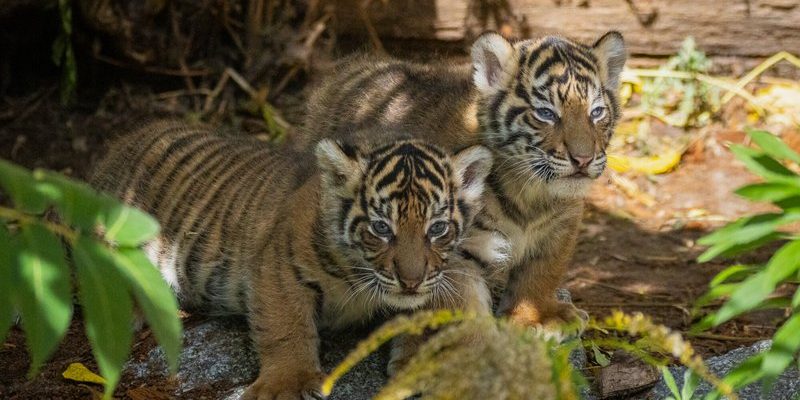
In the wild, these tigers face many challenges, from food scarcity to threats from poachers, but they have developed some impressive skills for nurturing their cubs. Understanding how Sumatran tigers raise their young offers us insights into their behavior, survival strategies, and the importance of conservation efforts to protect these magnificent animals. So, let’s dive into the wild world of Sumatran tiger parenting, exploring the various stages of raising their young and how they cope with the beauty and harshness of their natural habitat.
The Birth of Tiger Cubs
When a Sumatran tiger gives birth, it’s a crucial moment not just for the mother, but for the future of the species. Generally, a tiger’s gestation period lasts about 93 to 112 days. During this time, a mother tiger prepares a den—this could be a cave, hollowed-out tree, or dense thickets that provide safety. It’s like setting up a cozy nursery in the wild, where she can protect her newborns from predators.
Once the cubs are born, usually between two to four in a litter, they are completely helpless and rely on their mother for everything. At this early stage, the cubs are blind and weigh only about a pound. It’s heartwarming to think about a mother’s gentle care as she nurses her tiny cubs, keeping them warm and safe. She typically stays close to them for the first few weeks, ensuring they are fed and secure. Honestly, it’s a stark reminder of how vital maternal instincts are in the animal kingdom.
Feeding and Nutrition
As the cubs grow, so do their needs. By around two months old, they start to venture out of the den and eat solid food. This is when the mother’s role transitions from solely nurturing to actively hunting. Sumatran tigers are skilled hunters, preying on deer, wild boar, and sometimes even smaller leopards. Here’s the thing: a mother must teach her cubs not just to eat but to understand the skills of the hunt.
When it’s time to start feeding her cubs, she brings back fresh meat to share. Imagine a mom cooking a meal for her children—it’s a crucial bonding moment. The cubs learn through observation and imitation, watching their mother stalk and pounce. This playful yet serious learning phase is essential for their survival. Without these skills, they wouldn’t thrive on their own in the wild.
Playtime and Development
Play is a fundamental part of how Sumatran tiger cubs develop. They often engage in rough-and-tumble play, which looks like a game but serves a purpose. As they chase each other and practice pouncing, they’re honing the skills they’ll need as adults. This playtime is essential for both physical development and social skills, helping them learn how to interact with one another.
Cubs start to explore their surroundings more actively as they grow and become bolder. You might see them climbing trees or tumbling in the grass, learning about their environment. Their mother often supervises these adventures, ready to step in if danger lurks nearby. This hands-on approach is like a parent watching their child learn how to ride a bike—encouraging yet protective.
Independence and Leaving the Den
As the months pass, Sumatran tiger cubs become increasingly independent. By the age of six months, they start to accompany their mother on hunts. This is a significant step in their development. It’s like going from watching your parents drive to finally getting behind the wheel yourself. They begin to learn how to stalk quietly and use their camouflage to blend into the jungle.
However, the mother isn’t just training them in hunting; she’s also teaching them how to survive in their habitat. When they venture out, she shows them where to find water while keeping an eye on potential threats—like a seasoned guide revealing the best spots on a hiking trail. This is all part of an important transition leading up to their eventual independence.
Leaving the Nest
By the time the cubs are around two years old, they are nearly ready to leave their mother and start their own lives. This might sound like a tough breakup, but it’s a necessary part of their growth. Sumatran tigers are solitary animals, and a mother’s job is to prepare her young for independence, much like how parents teach their kids to stand on their own feet.
Before they leave, they have learned all the essential survival skills. They can hunt independently, find shelter, and navigate their territory. This is a pivotal moment—not just for the cubs but for the mother as well. Once her cubs are grown, she can focus on her own survival and potentially find a mate to start the process all over again.
The Challenges of Tiger Parenting
While Sumatran tigers are dedicated parents, they face many challenges in the wild. Habitat loss, poaching, and human-wildlife conflict threaten their survival. The jungle they call home is shrinking, which makes finding food and territory more difficult. It’s like living in a crowded neighborhood—everyone’s vying for the same space and resources.
Additionally, cub mortality rates are unfortunately high. Only about half of the cubs will survive to adulthood due to various dangers, including predators and food scarcity. This reality highlights the significant role mothers play in raising their young—every survival tip, every hunting lesson counts.
The Role of Conservation
Understanding how Sumatran tigers raise their young is vital for conservation efforts. Protecting their habitats and ensuring they have enough prey is critical for the survival of the species. Organizations working to preserve these magnificent creatures are not just saving tigers; they’re protecting the intricate balance of their ecosystem.
Imagine if we all pitched in to support programs that help sustain their natural habitats. Whether it’s donating to wildlife organizations or spreading awareness, every little bit helps. By appreciating how Sumatran tigers raise their young, we can better understand our role in their future and the importance of preserving the wild for generations to come.
In conclusion, the way Sumatran tigers raise their young is a beautiful example of dedication and adaptation in the wild. From nurturing newborns to teaching essential survival skills, these tiger mothers play a vital role in ensuring the survival of their species. As we learn about their lives and challenges, we’re reminded of the importance of conservation efforts to protect them and their habitats. Let’s champion these magnificent creatures and work towards a future where they can roam freely and thrive.

